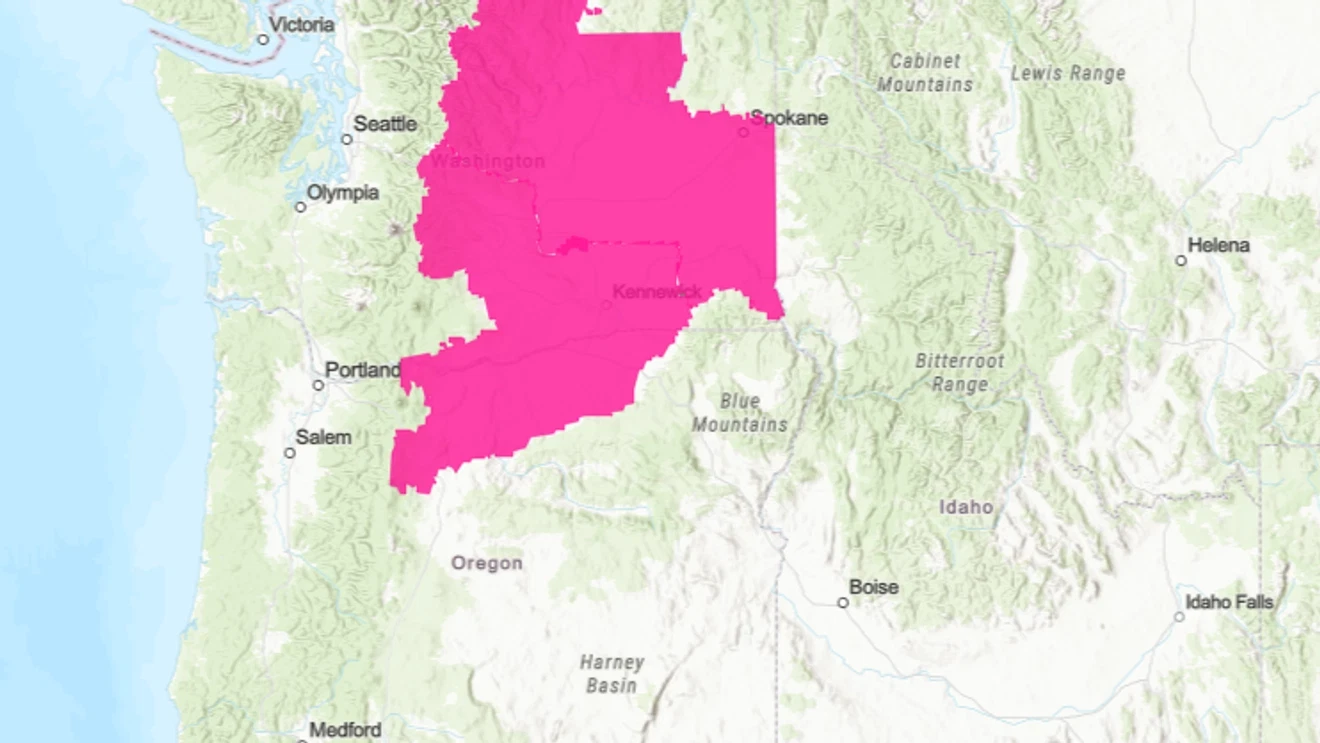Warning Details
PORTLAND, Ore. (KATU) — The National Weather Service (NWS) has issued a Red Flag Warning for parts of Oregon and Washington as the region heads into the first week of fall. The warning will be in effect from 1 p.m. to 11 p.m. Thursday, covering multiple high-risk areas across the Pacific Northwest.
The advisory applies to portions of the lower Columbia River Basin in both Oregon and Washington, the Eastern Columbia River Gorge, and the Warm Springs Reservation in Oregon.
Weather Conditions Behind the Warning
Forecasters say the fire risk stems from a combination of factors linked to an approaching mid-level jet stream. This system will bring dry, gusty winds from the southwest across eastern portions of the Cascades, creating conditions favorable for wildfire ignition and spread.
Also Read
Surface winds from the northwest are expected to blow steadily at 20 to 25 miles per hour, with gusts reaching up to 35 mph. The strongest winds will likely peak around 2 p.m. Thursday before gradually diminishing by about 8 p.m.
In addition to the high winds, relative humidity levels are expected to drop to 10% or lower, drying out vegetation and heightening the potential for fast-moving fires.
Areas Most at Risk
The Red Flag Warning highlights several regions where the danger will be most acute:
-
Lower Columbia River Basin (Oregon and Washington)
-
Eastern Columbia River Gorge (Oregon)
-
Warm Springs Reservation
-
Umatilla Valley
These areas, already prone to fire activity during late summer, face elevated risks due to the predicted weather pattern. Downslope winds from the Cascades further intensify the threat, rapidly drying fuels on the landscape.
Ongoing Air Quality Concerns
Ahead of the Red Flag Warning, an Air Quality Alert is already in effect through Wednesday night. The alert warns of potential health impacts from lingering smoke, particularly for vulnerable groups such as children, seniors, and people with pre-existing respiratory conditions. Residents are advised to limit outdoor activities and keep indoor air clean by closing windows and using air filters where possible.
Fire Season Context
While fire season in the Pacific Northwest typically runs from May through September, its intensity varies. July and August are often the most dangerous months, but September can still bring volatile fire weather, especially when dry air and gusty winds coincide.
This year’s season has already brought significant challenges, prompting additional federal support. The U.S. Department of Agriculture (USDA) recently announced new wildfire funding for Oregon and Washington, aimed at prevention and suppression efforts.
Safety Precautions for Residents
With fire danger heightened, the NWS and local agencies urge residents to take precautions:
-
Avoid outdoor burning and use of equipment that could spark fires, such as chainsaws or welders.
-
Secure trailer chains to prevent sparks on roadways.
-
Properly dispose of cigarettes and avoid parking vehicles on dry grass.
-
Have an evacuation plan in place if living near wildfire-prone areas.
Authorities stress that even small sparks can quickly ignite large fires under Thursday’s forecasted conditions.
Looking Ahead
Although the Red Flag Warning is expected to expire by late Thursday evening, officials caution that the region remains vulnerable until widespread rain arrives to dampen fuels. Residents across Oregon and Washington are encouraged to remain vigilant, especially in rural and forested areas where firefighting resources may be stretched thin.
As the Pacific Northwest transitions into fall, the upcoming weather event serves as a reminder that fire season is not over yet. The NWS and local fire agencies will continue monitoring conditions closely and provide updates as necessary.












